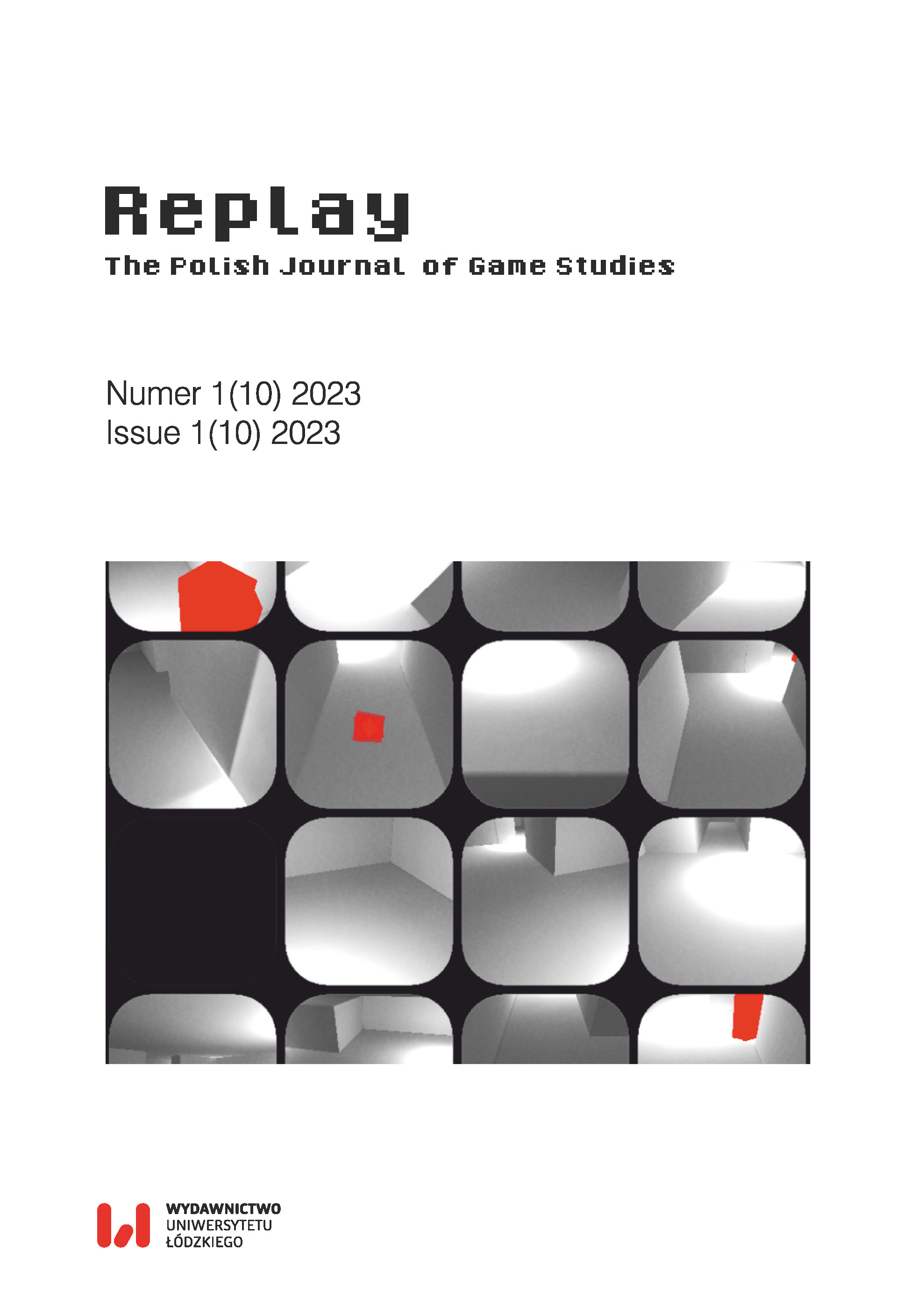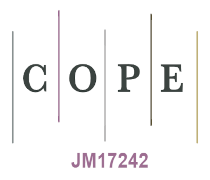Inhabiting Other Bodies – Animal Characters and Avatars
DOI:
https://doi.org/10.18778/2391-8551.10.04Keywords:
animal studies, phenomenology, animal games, avatar, PC, game studies, embodimentAbstract
This article explores the significance of phenomenological perspectives for animal games, as defined by Gunnar Eggertsson, in which the player’s character is meant to signal an animal. Using examples from games like Stray, Shelter 2, and Endling – Extinction is Forever, which treat animals as fully-fledged protagonists, I demonstrate how animal characters and avatars affect the gaming experience and broader human-animal relations outside of gameplay. The goal of this inquiry is to understand whether games can bring us closer to a better understanding of the animal Other by simulating its experiences and perspectives. This study utilizes the perspectives of critical animal studies and phenomenological philosophy to provide a deeper description and understanding of human players’ interactions with animal characters. It emphasizes the role of embodiment in shaping a transformative gameplay experience.
References
Amorim, M.-A. (2003). „What is my avatar seeing?”: The coordination of „out-of-body” and „embodied” perspectives for scene recognition across views. Visual Cognition, 10(2), 157–199. https://doi.org/10.1080/713756678
Google Scholar
DOI: https://doi.org/10.1080/713756678
Banks, J., Bowman, N.D. (2016). Avatars are (sometimes) people too: Linguistic indicators of parasocial and social ties in player–avatar relationships. New Media & Society, 18(7), 1257–1276. https://doi.org/10.1177/1461444814554898
Google Scholar
DOI: https://doi.org/10.1177/1461444814554898
Bassey, V. (3 listopada 2015). Shelter 2 – A Post Mortem. https://www.gamedeveloper.com/design/shelter-2-a-post-mortem (data dostępu: 7 października 2024).
Google Scholar
Berger, J. (1980). About looking; Why look at animals? Nowy Jork: Pantheon Books.
Google Scholar
Burt, J. (2005). John Berger’s „Why Look at Animals?”: A Close Reading. World-views: Global Religions, Culture, and Ecology, 9(2), 203–218. https://doi.org/10.1163/1568535054615321
Google Scholar
DOI: https://doi.org/10.1163/1568535054615321
Cerezo-Pizarro, M., Revuelta-Domínguez, F.-I., Guerra-Antequera, J., Melo-Sánchez, J. (2023). The Cultural Impact of Video Games: A Systematic Review of the Literature. Education Sciences, 13(11), Article 11. https://doi.org/10.3390/educsci13111116
Google Scholar
DOI: https://doi.org/10.3390/educsci13111116
Chang, A.Y. (2019). Playing nature: Ecology in video games. Minneapolis: University of Minnesota Press.
Google Scholar
DOI: https://doi.org/10.5749/j.ctvthhd94
Csíkszentmihályi, M. (2008). Flow: The Psychology of Optimal Experience. Nowy Jork: HarperCollins.
Google Scholar
De Jaegher, H., Di Paolo, E., Gallagher, S. (2010). Can Social Interaction Constitute Social Cognition? Trends in Cognitive Sciences, 14, 441–447. https://doi.org/10.1016/j.tics.2010.06.009
Google Scholar
DOI: https://doi.org/10.1016/j.tics.2010.06.009
Debarba, H.G., Molla, E., Herbelin, B., Boulic, R. (2015). Characterizing embodied interaction in First and Third Person Perspective viewpoints. 2015 IEEE Symposium on 3D User Interfaces (3DUI), 67–72. https://doi.org/10.1109/3DUI.2015.7131728
Google Scholar
DOI: https://doi.org/10.1109/3DUI.2015.7131728
Downs, E., Bowman, N.D., Banks, J. (2019). A polythetic model of player-avatar identification: Synthesizing multiple mechanisms. Psychology of Popular Media Culture, 8(3), 269–279. https://doi.org/10.1037/ppm0000170
Google Scholar
DOI: https://doi.org/10.1037/ppm0000170
Eggertsson, G.T. (2022). Life as a Lynx: A Digital Animal Story. W: A. Björck, C. Lindén, A.-S. Lönngren (red.), Squirrelling Human–Animal Studies in the Northern-European Region (s. 197–216). Stockholm: Södertörn University.
Google Scholar
Gee, J.P. (2008). Video Games and Embodiment. Games and Culture, 3(3–4), 253–263. https://doi.org/10.1177/1555412008317309
Google Scholar
DOI: https://doi.org/10.1177/1555412008317309
Han, B.-C. (2024). Kryzys narracji i inne eseje (tłum. R. Pokrywka). Warszawa: Wydawnictwo Krytyki Politycznej.
Google Scholar
Haraway, D. J. (2016). Staying with the Trouble. Making Kin in the Chthulucene. Durham: Duke University Press. https://www.dukeupress.edu/staying-with-the-trouble
Google Scholar
DOI: https://doi.org/10.2307/j.ctv11cw25q
Kamińska, M. (2011). Niecne memy: Dwanaście wykładów o kulturze internetu. Poznań: Galeria Miejska „Arsenał”.
Google Scholar
Kearney, R. (1988). The Wake of Imagination: Toward a Postmodern Culture (1st edition). Nowy Jork–Londyn: Routledge.
Google Scholar
Kearney, R. (2020). Philosophies of Touch: From Aristotle to Phenomenology. Research in Phenomenology, 50(3), 300–316. https://www.jstor.org/stable/27117412
Google Scholar
DOI: https://doi.org/10.1163/15691640-12341453
Klevjer, R. (2012). Enter the Avatar: The Phenomenology of Prosthetic Telepresence in Computer Games. W: J. Sageng, H. Fossheim, T. Mandt Larsen. (red.) The Philosophy of Computer Games. Philosophy of Engineering and Technology (t. 7, s. 17–38). Dordrecht: Springer. https://doi.org/10.1007/978-94-007-4249-9_3
Google Scholar
DOI: https://doi.org/10.1007/978-94-007-4249-9_3
Kłosiński, M. (2023). Przygody cyfrowego tułacza: Interpretacje groznawcze. Katowice: Wydawnictwo Uniwersytetu Śląskiego.
Google Scholar
DOI: https://doi.org/10.31261/PN.4147
Leonek, D. (2019). Endling. Diana Lelonek. http://dianalelonek.com/portfolio/563/
Google Scholar
„Like using the Force”: Neuralink patient demonstrates how he plays chess using brain-chip – video. (21 marca 2024). The Guardian. https://www.theguardian.com/society/video/2024/mar/21/neuralink-patient-plays-chess-using-brain-chip-video (data dostępu: 7 października 2024).
Google Scholar
Małecki, W., Pawłowski, B., Sorokowski, P. (2016). Literary Fiction Influences Attitudes Toward Animal Welfare. PLOS ONE, 11(12), e0168695. https://doi.org/10.1371/journal.pone.0168695
Google Scholar
DOI: https://doi.org/10.1371/journal.pone.0168695
Merleau-Ponty, M. (2002). Phenomenology of perception: An introduction. Nowy Jork– Londyn: Routledge.
Google Scholar
DOI: https://doi.org/10.4324/9780203994610
Nagel, T. (1974). What Is It Like to Be a Bat? The Philosophical Review, 83(4), 435–450. https://doi.org/10.2307/2183914
Google Scholar
DOI: https://doi.org/10.2307/2183914
Pick, A. (12 czerwca 2015). Necsus | Why not look at animals? https://necsus-ejms.org/why-not-look-at-animals/ (data dostępu: 7 października 2024).
Google Scholar
Ratcliffe, M. (2008). Feelings of Being: Phenomenology, psychiatry and the sense of reality. Oxford: Oxford University Press. https://doi.org/10.1093/med/9780199206469.001.0001
Google Scholar
DOI: https://doi.org/10.1093/med/9780199206469.001.0001
Tyler, T. (2022). GAME. Animals, Video Games and Humanity. Minneapolis: University of Minnesota Press.
Google Scholar
Tymińska, M. (2016). Avatars Going Mainstream: Typology of Tropes in Avatar-Based Storytelling Practices. Replay. The Polish Journal of Game Studies, 3(1), 101–117.
Google Scholar
DOI: https://doi.org/10.18778/2391-8551.03.06
Uexküll, J. von. (2010). A foray into the worlds of animals and humans: With A theory of meaning (tłum. J.D. O’Neil). Minneapolis: University of Minnesota Press.
Google Scholar
Walsh, G. (2014). Taming the monster: Violence, spectacle and the virtual animal. ANTENNAE: The Journal of Nature in Visual Culture, 30, 21–34.
Google Scholar
Westerlaken, M., Gualeni, S. (2014). Felino: The Philosophical Practice of Making an Interspecies Videogame. The Philosophy of Computer Games Conference, Istanbul. https://gamephilosophy.org/wp-content/uploads/confmanuscripts/pcg2014/Westerlaken_Gualeni-2014.-Felino_The-Philosophical-Practice-of-Making-an-Interspecies-Videogame.-PCG2014.pdf
Google Scholar
Westerlaken, M., Gualeni, S. (2016). Situated Knowledges through Game Design: A Transformative Exercise with Ants. The Philosophy of Computer Games Conference, Valletta. https://www.um.edu.mt/library/oar/handle/123456789/23364
Google Scholar
BlueTwelve Studio (2022). Stray [PC]. Annapurna Interactive.
Google Scholar
CD Projekt Red (2015). The Witcher 3: Wild Hunt [PC]. CD Projekt.
Google Scholar
eduweb (2007). WolfQuest [PC]. Minnesota Zoo and eduweb.
Google Scholar
Firaxis Games (2016). Sid Meier’s Civilization VI [PC]. 2K Games.
Google Scholar
Frontier Developments (2003). Dog’s Life [PlayStation 2]. Sony Computer Entertainment.
Google Scholar
Herobeat Studios (2022). Endling – Extinction is Forever [PC]. HandyGames.
Google Scholar
House House (2019). Untitled Goose Game [PC]. Panic.
Google Scholar
Might and Delight (2013). Shelter [PC]. Might and Delight.
Google Scholar
Might and Delight (2015). Shelter 2 [PC]. Might and Delight.
Google Scholar
Mighty Kingdom (2022). BBEE [PC]. Mighty Kingdom.
Google Scholar
Rocksteady Studios (2009). Batman: Arkham Asylum [PC]. Warner Bros. Interactive Entertainment.
Google Scholar
Technically Finished (2009). Hærfest [PC]. Breda University of Applied Sciences Tripwire Interactive (2020). Maneater [PC]. Tripwire Interactive.
Google Scholar
Varsav Game Studios (2019). Bee Simulator [PC]. Bigben Interactive.
Google Scholar
Downloads
Published
How to Cite
Issue
Section
License

This work is licensed under a Creative Commons Attribution-NonCommercial-NoDerivatives 4.0 International License.










